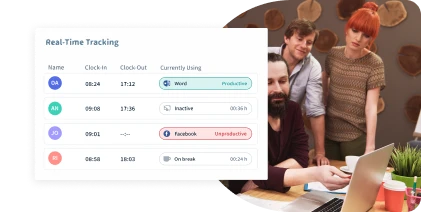Table of Contents
Organizations are increasingly adopting rotating shifts to ensure continuous operations and meet the demands of a global marketplace.
However, 79% of organizations use manual methods to create rotating shift schedules. Thus, facing a bunch of challenges such as:
- No data analysis
- Compliance risks
- Lack of flexibility
- Inequitable assignments
- Poor employee engagement
This guide will help you discover the strategies and tools to design effective rotating shift schedules helping you find the right balance and boost productivity.
Let’s dive in:
The Basics of Rotating Shifts
Rotating shifts refer to a scheduling system in which employees work a sequence of shifts over a designated time.
Instead of sticking to fixed schedules, employees rotate through various shifts, including:
- Day
- Evening
- Night
It helps to ensure continuous coverage across 24 hours.
Fixed Rotation
In this type, employees follow a predetermined rotation pattern, typically spanning a specific number of days or weeks before the cycle repeats.
Common fixed rotation patterns include the following:
- 2-2-3 pattern (e.g., two days on, two days off, three days on)
- 4-3 pattern (e.g., four days on, three days off)
- 5-2 patterns (e.g., five days on, two days off)
Cyclical Rotation
Cyclical rotation involves longer cycles extending beyond a week, often lasting several weeks or months.
Employees may work different shifts within each cycle, and the pattern repeats after the cycle is complete.
For example:
- 6-4 pattern (e.g., six weeks on a particular shift, followed by four weeks off)
- 8-6 pattern (e.g., eight weeks on a specific shift, followed by six weeks off)
Split Shifts
Split shifts involve dividing the workday into two or more distinct shifts, typically with a break in between.
Split shifts are standard in industries such as:
- Transportation
- Healthcare
- Hospitality
For example, an employee may work the morning shift, have an extended break, and then return for the evening shift.
Bid-Based Rotation
Bid-based rotation lets employees choose their preferred shifts or rotations based on a bidding process.
It considers seniority, performance, and employee preferences to allocate shifts.
It provides employees with some level of control and flexibility over their schedules.
Looking for a way to automate a rotating shift system?
Workstatus offers an ideal solution for automating a rotating shift system. Its advanced features simplify the process, from tracking employee availability to generating optimized schedules.
Read the next section to know the power of automated shift scheduling.
Workstatus- Automate Rotational Shift Scheduling
By leveraging Workstatus, organizations can streamline the scheduling process, improve accuracy, enhance productivity, and ensure efficient resource allocation.
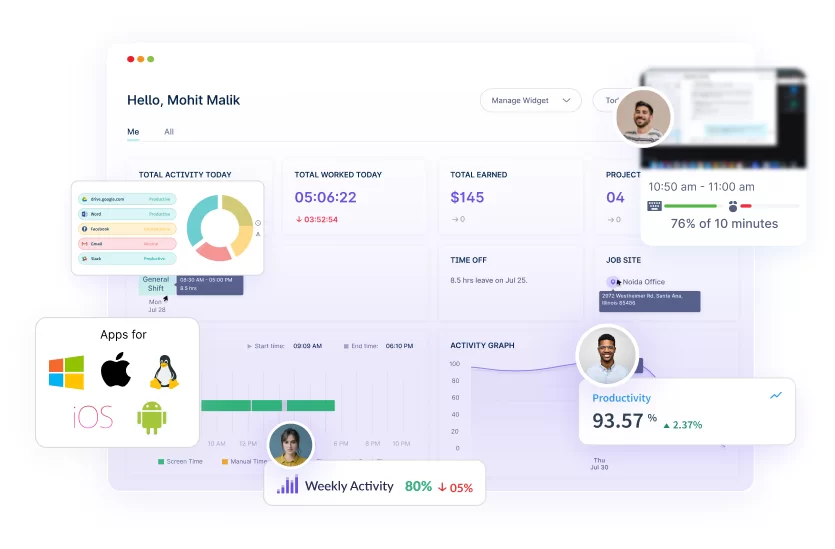
Here are some ways to do it:
Track employee availability
- Maintain a centralized employee database with up-to-date availability information
- Easily track employee preferences for specific shifts, days off, or preferred rotations
- Ensure accurate shift assignments by matching available employees with open shifts

Manage Time-off Requests
- Streamline the process of managing time-off requests through automation
- Employees can submit requests electronically, and managers can review and approve them within the scheduling system
- Avoid scheduling conflicts by automatically accounting for approved time-off requests when creating shift schedules
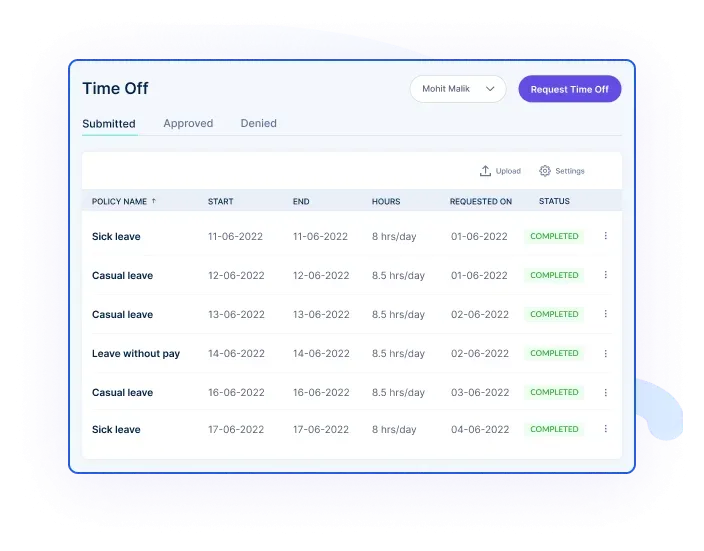
Analyze Shift Data to Identify Productivity Trends
- Collect and analyze data on shift performance, employee productivity, and other relevant metrics
- Identify trends and patterns in productivity to make data-driven decisions when assigning shifts
- Optimize schedules by allocating high-performing employees during critical periods or peak demand hours
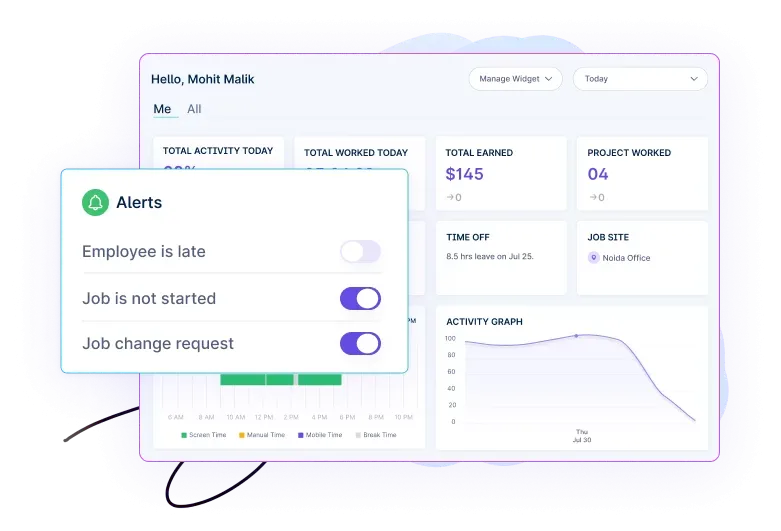
Use Reports to Optimize Shift Schedules
- Generate detailed reports on shift coverage, employee hours, and schedule adherence
- Analyze data to identify gaps in coverage, overtime costs, or underutilized resources
- Fine-tune shift rotations based on historical data and performance trends
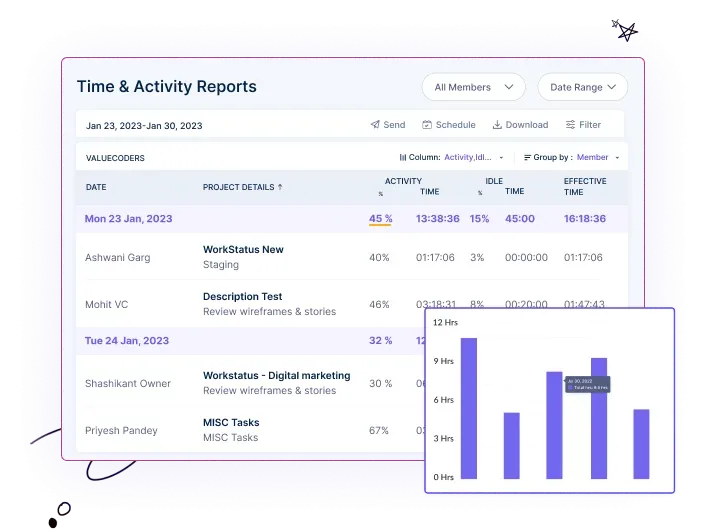
Track and manage Schedules From Your Mobile
- Access and manage shift schedules on the go through mobile applications
- Enable employees to view their assigned shifts, request shift swaps, or manage availability from their mobile devices
- Empower managers to handle scheduling tasks remotely, including approving time-off requests and making schedule changes
Common Industries that Use Rotating Shift Schedules
Rotating shift schedules are utilized across various industries to meet the constantly changing requirements of a 24/7 global economy.
Here are some common industries that commonly employ rotating shift schedules:
- Healthcare
Hospitals, clinics, and emergency medical services require round-the-clock staffing for continuous patient care.
Rotating shifts are standard among healthcare professionals, including doctors, nurses, and support staff.
- Manufacturing
Automotive, electronics, and pharmaceutical industries often operate multiple shifts to maintain uninterrupted production.
Rotating shifts help optimize equipment utilization and maximize productivity.
- Transportation
Airlines, Railways, and Shipping companies operate around the clock.
Rotating shifts are essential for pilots, flight attendants, train operators, and other transportation personnel to ensure seamless travel services.
- Public Safety and Emergency Services
Police departments, fire stations, and emergency response teams require 24/7 coverage to protect public safety.
Rotating shifts are necessary for police officers, firefighters, paramedics, and dispatchers.
- Call Centers
Customer support centers and helplines operate 24/7 to assist customers globally.
It enables call center agents to provide support during different time zones and accommodate customer inquiries around the clock.
- Energy and Utilities
Power plants, oil refineries, and utility companies often require continuous operations.
Rotating shifts are employed to monitor and maintain critical infrastructure and respond to emergencies promptly.
Top 6 Factors to Consider When Designing Shift Rotations
Read the below infographics to know about the important factors while designing shift rotations for your teams.

Understanding Legal and Ethical Considerations
Compliance with labor laws and regulations
Workstatus ensures compliance with labor laws and regulations regarding working hours, rest periods, and over time, reducing the risk of non-compliance and legal issues.
Here are its data Center Certifications:
- ISO 9001 Quality management
- ISO 14001 Environmental management
- ISO 22301 Security and resilience
- ISO 27001 Information security management
- ISO 50001 Energy management
- SOC 2 Type II Data Security and Privacy
- PCI-DSS Information security
Also, it provides automated features to enforce labor regulations and track employee hours accurately.
Address fairness and equality issues
Workstatus promotes fairness and equality by eliminating favoritism or bias in shift assignments through unbiased algorithms and transparent scheduling processes.
The platform ensures equitable distribution of shifts, reducing employee dissatisfaction and potential discrimination claims.
Balance employee rights and organizational needs
Workstatus balances employee rights and organizational needs by considering employee preferences, availability, and required skills when creating shift schedules.
It enables employees to request time off, swap shifts, and manage their schedules while ensuring operational efficiency and coverage.
Closing Thoughts
Implementing a well-designed rotating shift schedule can bring numerous benefits to both organizations and employees.
Embracing automation tools like Workstatus can further streamline the process, reducing manual errors and enhancing overall efficiency.
With a thoughtful approach to rotating shift schedules, companies can create a harmonious work environment that meets business needs while prioritizing the well-being of their workforce.
FAQs
Q: How can Workstatus help with managing shift preferences?
Ans: Workstatus allows employees to input their shift preferences, including specific days, times, or rotations they prefer.
It considers these preferences when generating schedules, ensuring a better alignment between employee preferences and assigned shifts.
Q: Can Workstatus handle complex scheduling requirements like multiple locations or skill-based rotations?
Ans: Yes, Workstatus is designed to handle complex scheduling requirements. It can accommodate multiple locations, skill-based rotations, and other specific scheduling needs.
Q: How can Workstatus help improve communication between managers and employees regarding shift changes or updates?
Ans: Workstatus offers robust communication features, such as real-time notifications and messaging, to facilitate efficient communication between managers and employees.
Managers can quickly notify employees of shift changes, updates, or important announcements, ensuring everyone is informed and on the same page.

